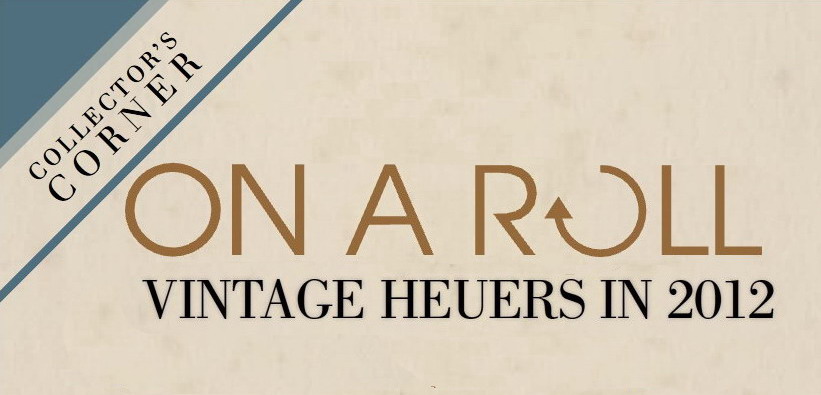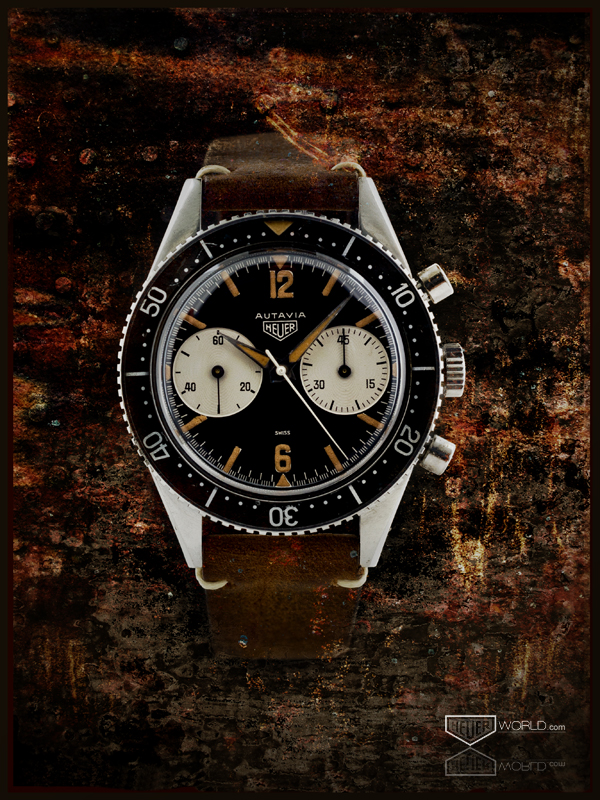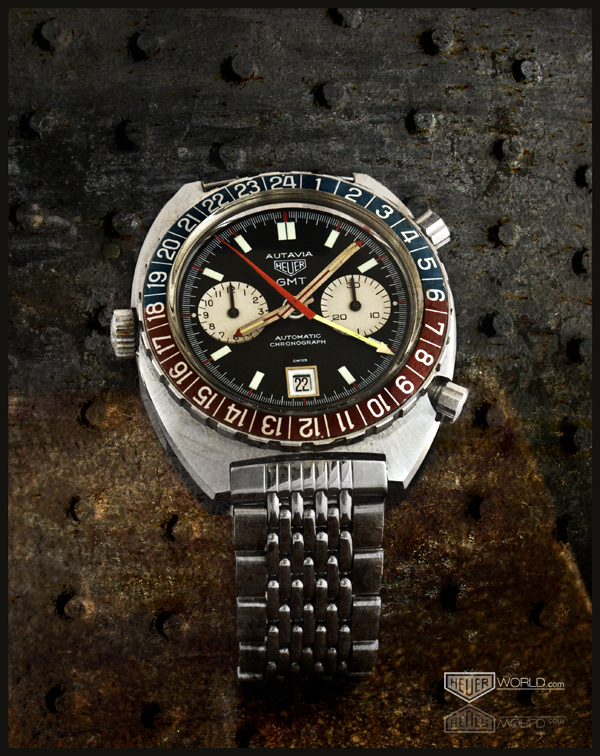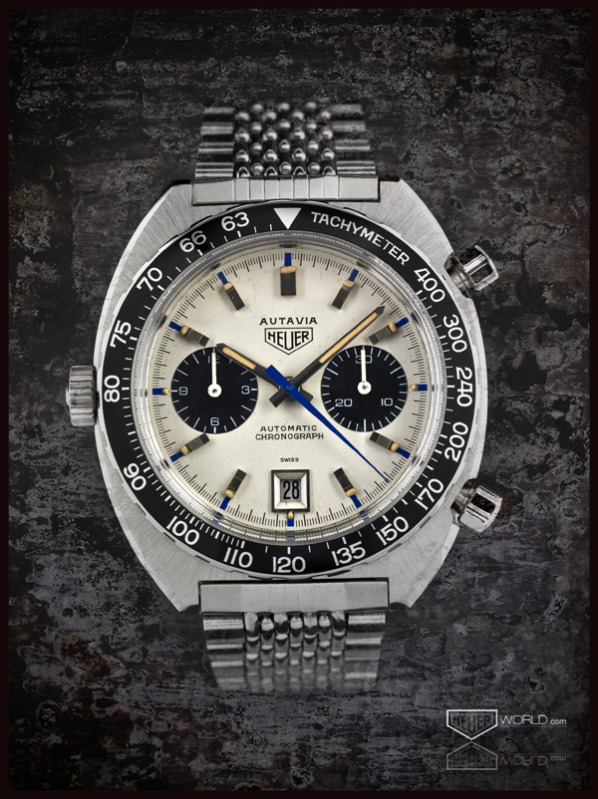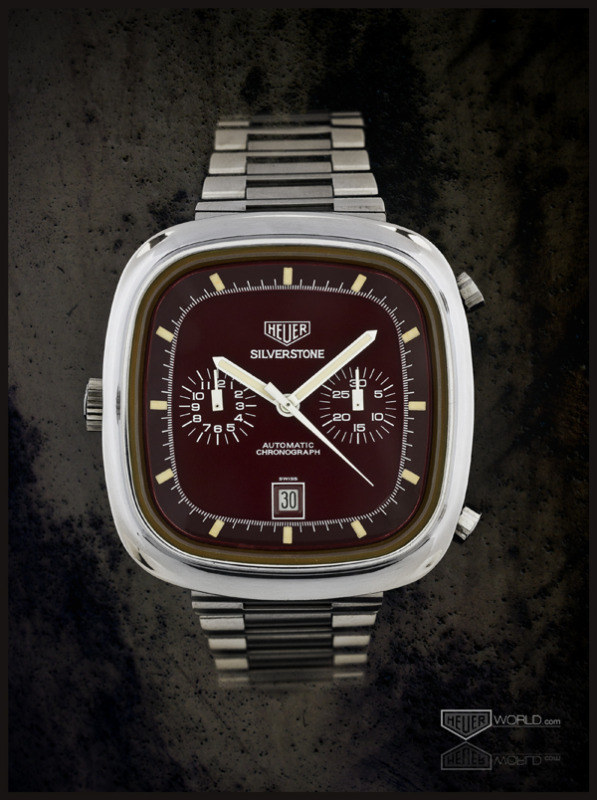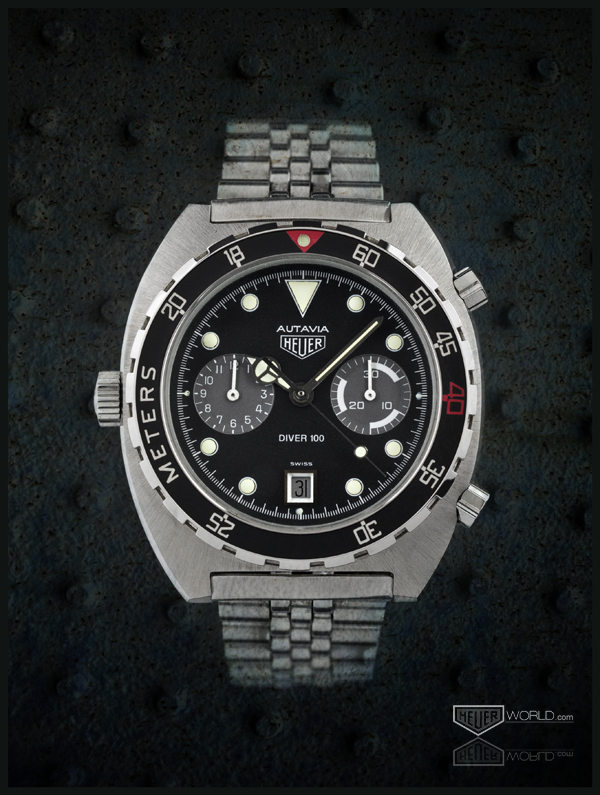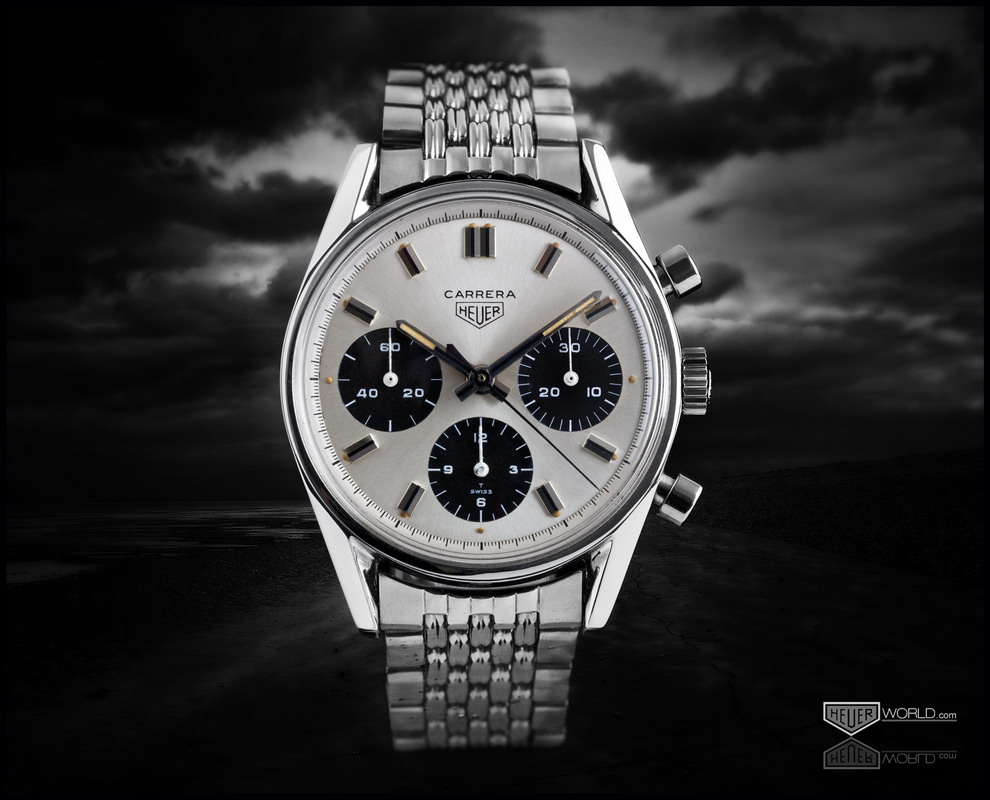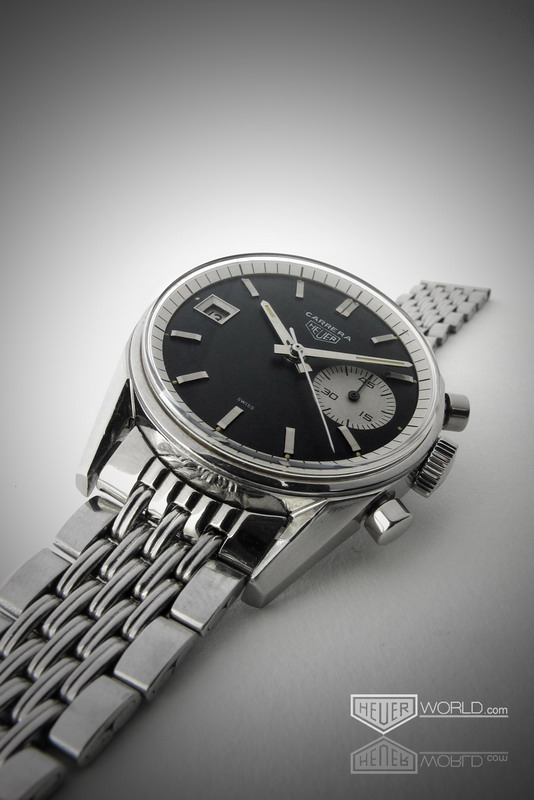The community of vintage Heuer enthusiasts is a great place to be right now. Over the past two years, the community has celebrated Heuer’s 150th anniversary, high profile auctions, the publication of books, blogs and websites, and even the discovery of new models. Prices for the old Heuers have been strong, even through the depths of the global recession, with vibrant public and private markets.
While there are other brands and communities that may have enjoyed similar success, a review of the factors that have fueled the uptick in the vintage Heuer community illustrates the drivers that support any community of collectors. As individual collectors select their brands, and as communities utilize social media and social events to share experiences, it is instructive to explore the phenomenon of collecting vintage Heuers in the year 2012.
On the Track and On the Wrist. Survey advertising for today’s chronographs and sports watches, and you will see brands using a variety of imagery to create excitement about their watches. While we see images of flying, sailing, diving and exploring, motorsports remains the image of choice for many of today’s brands. New models pay homage to historic events and racers — the 24 Hours ofLe Mans, theMilleMiglia, and the Indy 500; fromTazioNuvolari toCarrollShelby to Felipe Massa. Buyers of performance cars select the equipment for their cars; increasingly, a high-end watch is part of the package.
While some watch brands turn to their creative groups to develop the right motorsports imagery, for TAG Heuer a visit to the company archives is sufficient. Jack Heuer came to the United States in 1958 to sell stopwatches to the car racing guys and, while he was at the track, he managed to sell a few of his chronographs. The racers wore Heuer chronographs, teams used Heuer stopwatches and clocks, and sanctioning groups relied on Heuer timing equipment for their events. As brands appropriate the racing imagery of the 1960s and 70s, Heuer enjoys its unique position as the original owner of compelling images from this era. Today’s ambassadors roll up their sleeves and strap on a chronograph when they go to the podium. McQueen, Lauda, Rindt, Villeneuve and Regazzoni wore their Heuers when they raced.
The Oral History of Heuer. Having compelling history is one thing; being able to pass that history to a new generation of enthusiasts is another. The gentlemen who played key roles in designing, selling and servicing Heuers in the 1960s and 70s are now in their own 60s and 70s [funny how that math works], and the same is true for many of the racers who wore Heuer chronographs. The community of vintage collectors is fortunate that key players from Heuer’s golden age have excellent recall and seem to enjoy answering endless questions about the brand. Jack Heuer was President of Heuer Leonidas throughout the 1960s and 70s, and provides overnight answers to e-mail queries. Other retired Heuer executives recall the development of Heuer’s chronographs, as well as technical features of the watches. Blogs, Tweets and forums take information that has been hidden for years, and deliver it to the community of enthusiasts in minutes.
A Wealth of Information; A Safe Market. Ten years ago, readily available information on vintage Heuer chronographs was limited to a “coffee table” book and three or four articles about specific models, available on the internet. In 2012, almost all Heuer models from the 1960s and 70s are cataloged with online images, detailed reference tables and even serial numbers, and there has been a proliferation of books, blogs, websites and discussion forums dedicated to the brand. Seasoned collectors explore the intricate details of their watches; novices are drawn in by the rich images and information. The market has become safer, as it becomes easier to separate the rare ones and prototypes from the fakes.
Welcome to the Clubhouse. While information and images are important, collectors may also be drawn to a brand by the camaraderie of its collecting community. Heuer collectors have used discussion forums, blogs and other social media to build a virtual “clubhouse” for the community. Regular participants have a variety of day jobs – watchmakers, a goldsmith, an artist, an engineer, an architect, and the usual doctors, lawyers and bankers. After hours, some collectors take detailed photos of their watches, others build spreadsheets, databases and price guides, and still others dig for historical documents and images. The community congratulates the collector who has found the flea market bargain. It also makes recommendations to the novice or helps him straighten out a watch that may need some attention.
A Broad Range of Prices in a Strong Market. Vintage Heuer chronographs cover a broad range of prices. The new collector can find an interesting Heuer for $1,000, with most chronographs from the 1960s and 70s selling in the range between $2,000 and $5,000. High-end models occupy the band between $5,000 and $15,000, with the rarest of the rare topping the $20,000 mark. These prices may seem high for those who are beginning to explore vintage watches. On the other hand, Heuers are increasingly viewed as bargains for veterans looking for low-price alternatives to Rolex Daytonas, Submariners or Seadwellers. Over the last 10 years, prices for most vintage Heuers have risen steadily, with any “corrections” being relatively short-lived.
Support from TAG Heuer. Like any brand that focuses on its bottom line, TAG Heuer must be driven to sell its current line of watches. Fortunately for the vintage collectors, however, TAG Heuer appreciates its unique heritage and effectively utilizes this heritage to promote its current watches. Heuer opened its Museum in 2008 and celebrated its 150th anniversary in 2010, with both these events drawing worldwide attention to the vintage Heuers. It seems that there is always something to celebrate. TAG Heuer will soon release a new Carrera to mark Jack Heuer’s 80th birthday and the Carrera itself turns 50 in 2013.
TAG Heuer is effective in using the imagery of the 1960s and 1970s to sell today’s Carreras and Monacos, and this imagery often sparks curiosity about the original watches. A gentleman spends the afternoon browsing for watches at a local mall; he is intrigued by the history of the Carrera and the Monaco. That night, he’s on the internet, reading about the Carrera Panamericana races of the 1950s and Steve McQueen’s selection of the Monaco for the filming of Le Mans. He realizes that the $3,000 that had been burning a hole in his pocket that afternoon will buy a nice piece of Heuer’s history, and suddenly we have a new vintage collector. The heritage supports today’sTAGHeuerwatches; today’s marketing also generates interest in the vintage Heuers.
And One Last Thing, They Are Great looking Chronographs! We close this quick survey of today’s vintage Heuer community with what may be the most important observation of all. Collectors are chasing the vintage Heuer chronographs in 2012 for the same reason that they did in 1962 — because they are great looking chronographs. Heuer did well with the classic looks of the 1960s, with its introduction of the manual-wind Autavias and Carreras. The brand entered the 1970s with new movements and cases for these models and the introduction of theMonaco. Throughout the 1970s, Heuer added models with the racing theme – Silverstone, Daytona, Jarama and Monza, among many others.
This broad and varied line of chronographs was attractive to racing enthusiasts in the “golden age”; these chronographs remain attractive to today’s collectors. Even more telling, the Heuers are appealing to a new generation of collector. Indeed, from the Great Generation, to the Baby Boomers, to the X Generation, vintage Heuer chronographs are proving to have enduring appeal.
This posting originally appeared as an article in the inaugural issue (Summer 2012) of a new magazine, Wrist Watch. The article was written by Jeff Stein, and Paul Gavin provided the photographs. A PDF version of the article is available here.
Jeff Stein is an attorney in Atlanta, Georgia. He operates the www.OnTheDash.com website, covering vintage Heuer chronographs, dashboard timers and stopwatches.
Paul Gavin lives in the south east of England and by day, runs a variety of business from dentistry to construction. When time permits he combines his passions for vintage Heuer watches and photography and shares his images via his website www.heuerworld.com

